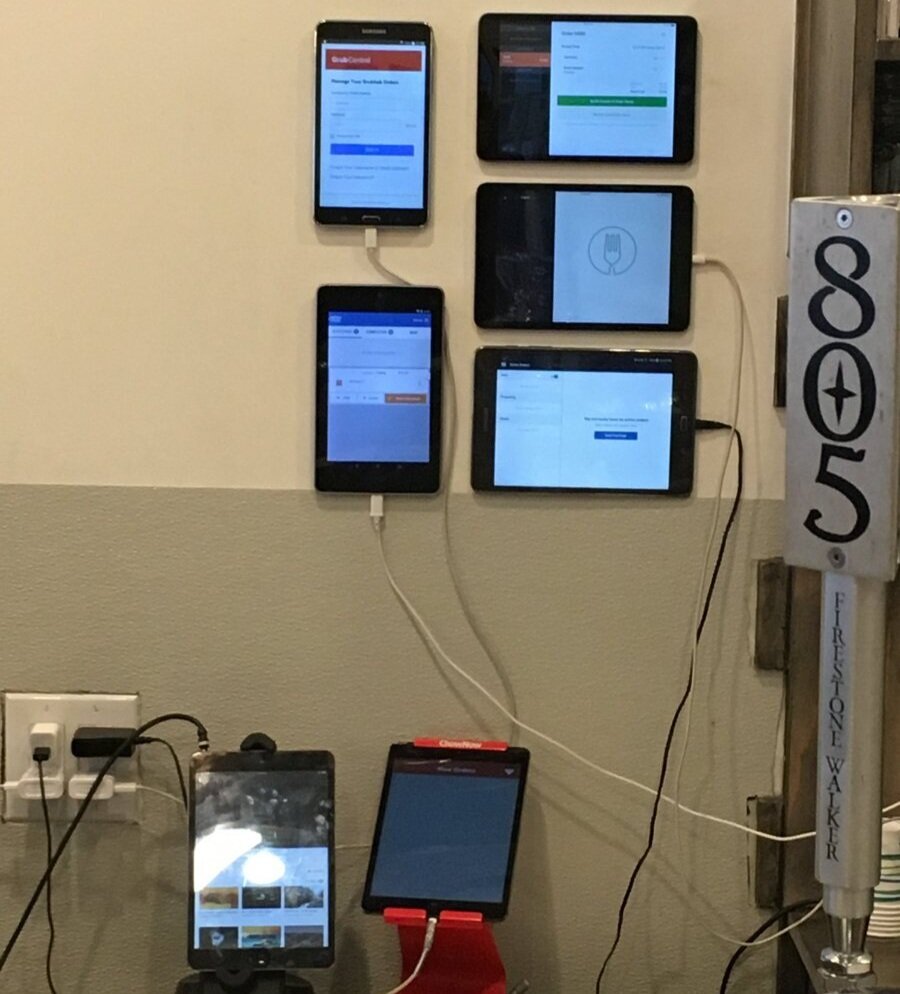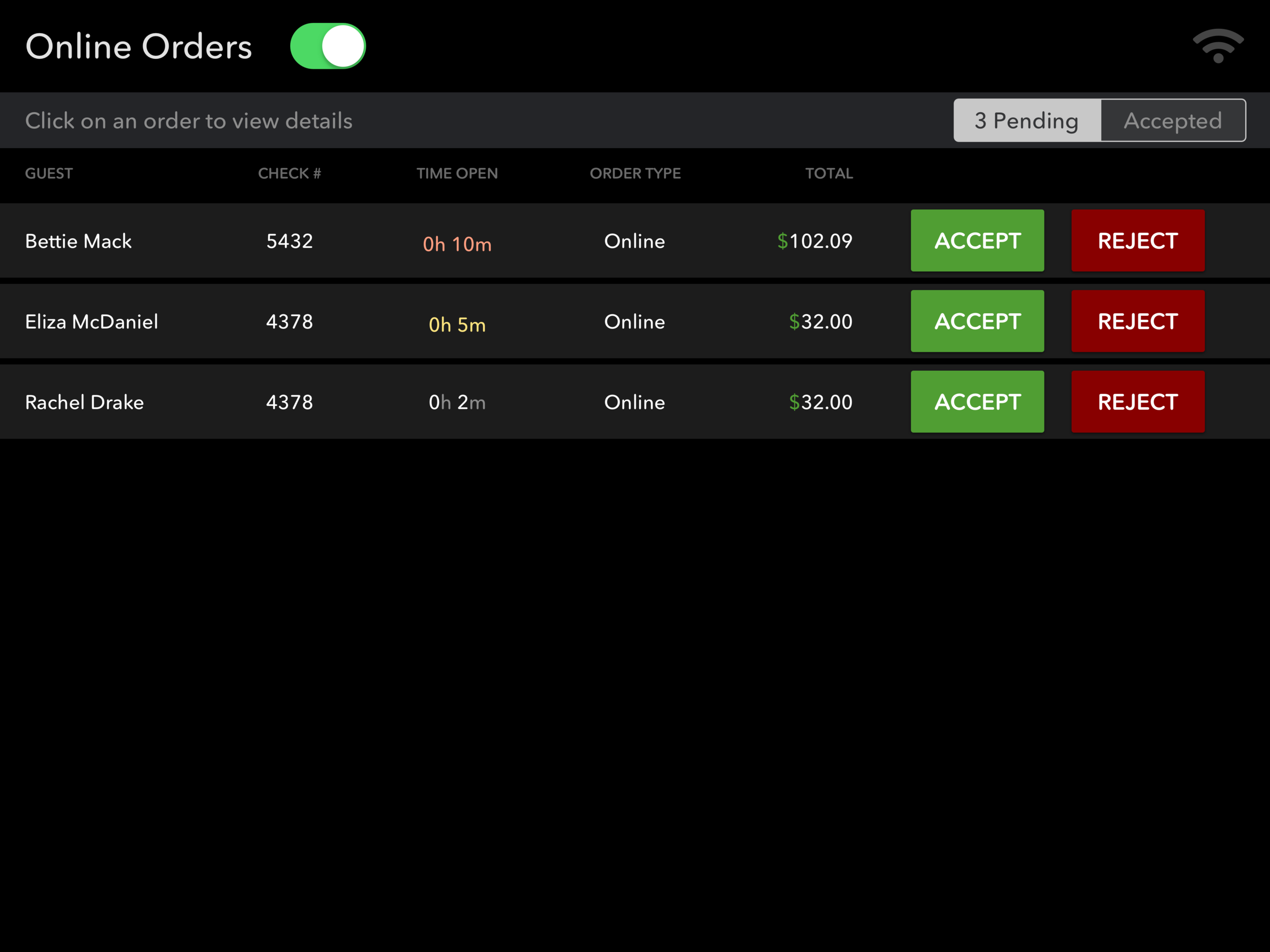Online Ordering Terminal
Team
I acted as the design lead for this project and worked alongside a product manager and a team of iOS engineers.
Goal
To create an online ordering feature that allows multiple online ordering providers to send customer orders directly to the SALIDO point of sale.
So…
…many…
devices!
User & Audience
The product manager and I spoke with predominantly quick service restaurants that have high volume during lunch. We discovered that our target users were front of the house cashiers, servers and occasionally managers.
Design Process
During our discovery process, we realized that online ordering is a disorganized world. Currently, if a restaurant wants to integrate with multiple providers, they need a dedicated device to handle each of those services. This was our first main problem to tackle, consolidation. SALIDO wants to eliminate the use of all these separate devices and allow the 3rd party services to interact with a single SALIDO terminal.
When we did our research, we discovered that 50% of the restaurants wanted a way to manually throttle their incoming orders. The PM and I along with help from our CX team brainstormed the many ways we could accomplish this. We broke the solutions apart by feasibility and time-frame and ended up with a simple ACCEPT/REJECT workflow. This is a feature that can also be turned off, for those restaurants that prefer to auto-accept all orders.
We performed some internal design studios, such as crazy-8s and white-boarding to bring ideas together.
A sketch from a Crazy 8 exercise
UI Design
The objective of the interface was to keep all text and buttons simple and organized since there could be 50+ orders coming through at once. All fonts and colors are consistent with how the SALIDO style guide looked at the time.
Interaction Design
Our main focus was perfecting the accept/reject flow. It was super important to inform the operator that either of these actions is not reversible. We also wanted to make sure that if there was an issue of any kind (printing error, order not sent to the kitchen, the terminal is offline etc.), that the operator can determine the root cause and resolve them as quickly as possible.
Testing
We tested this product with our core users to make sure that our MVP provided enough control and made their lives easier. We did some in-person usability testing in the user'‘s environments to make sure they can achieve certain goals. With the help of the PM, we create a series of tasks to perform to validate whether the product was successful.
Outcomes
This feature was a huge success for SALIDO. It gave us the ability to market to food delivery and ordering ahead, which many of our existing customers have been urging us for. Since its launch, the online ordering system has processes 1+ million transactions. The next big objective for the company is to expand to additional providers, such as UberEats, Grubhub, Seamless, and others. 






